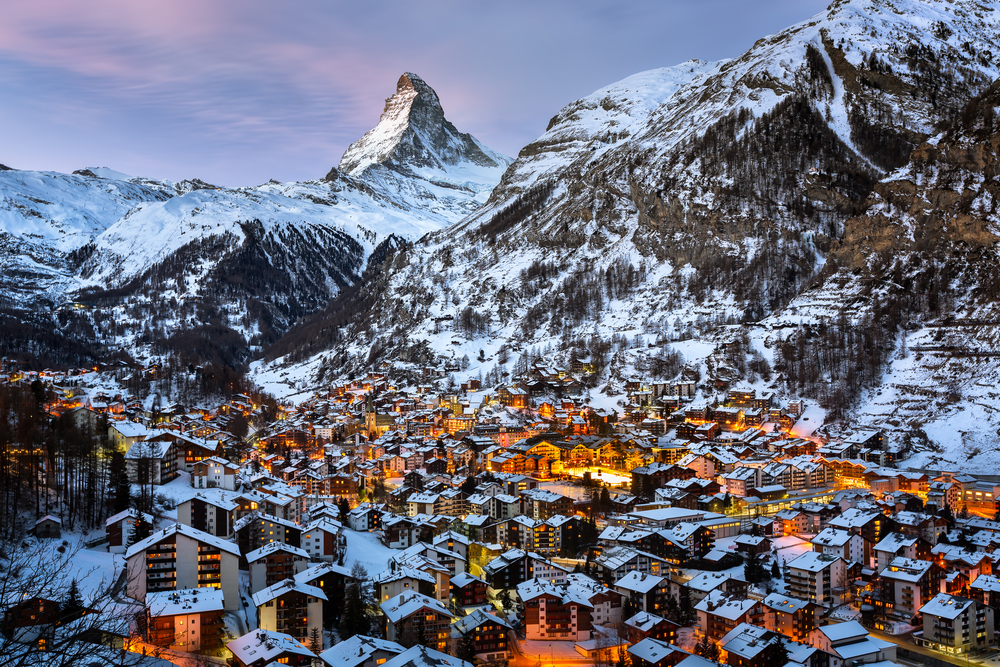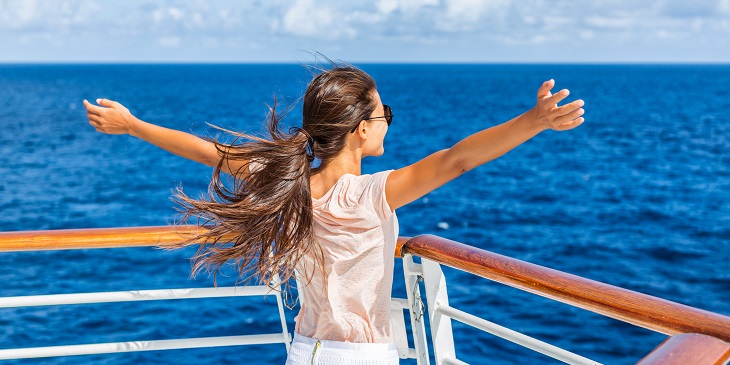Do you need travel insurance for a ski holiday?

Have you ever looked at the small print of your travel insurance policy before going skiing, to check exactly what you're covered for?
Don't assume that basic travel insurance will provide ski cover. It's rarely the case. On top of this, no two travel insurance policies are exactly the same. Hopefully this comprehensive guide will help you find out what travel insurance cover you have, or need, before you head to the slopes or a day trip to Lapland.
In this article....
Travel insurance for a skiing trip - most frequently asked questions:
- Most common skiing and snowboarding injuries
- Winters sports insurance claim statistics
- How do I know if skiing is covered on my travel insurance policy?
- What winter sports travel insurance covers
- Exclusions to check on your ski insurance policy
- Travel insurance for skiing if you are over 65
- Off piste insurance
- Travel insurance needed for a day trip to Lapland
- How to claim on your travel insurance from abroad
- How to compare skiing insurance cover
Check how your travel insurer rate on CLAIM handling before you buy your next policy
Winter sports insurance claim statistics
Winter sports travel insurance > Average claim amount is 34.9% higher, and cost over £1000.
Stats on travel insurance claims* where the policy holder added the option of Winter Sports insurance are an eye opener:
- Only 6.2% of policies sold include a winter sports insurance cover option
- 47% of people who contract a winter sports insurance are single (individual) policy holders, followed by families at 30%
- However...families (and single parent families) are the most likely to claim
- Policy holders with a winter sports add-on are 2.6 times more likely to claim on their policy **
- Average claim amount for policies with a winter sports insurance add-on is £1,051
- Average claim amount for policies with winter sports insurance cover is 34.9% higher than for policies without that cover option
Because of this it's important to spend a little time checking your next travel insurance policy not just on price comparison or how easy it is to buy or access your policy details. We recommend you do a quick check on how they have been rated by customers on how they handle claims.
* Source - InsuranceRepublic - Travel insurance policies and insurance claims trend report 2018. Sample size: Policies with winter sports insurance 8,748. Policies without winter sports insurance 132,887. Total sample size: 141,635 policies. Policies sold from Nov 2015 to February 2017)
**based on 1.94% claim ratio to policy for policies with winter sports versus 0.74% of policy holders who didn't have winter sports insurance.
Most common skiing and snowboarding injuries
Skiing and snowboarding can be dangerous sports. Here are some common scenarios:
- You're going skiing off-piste
- Trying to keep up with a group of friends of higher abilities
- You've picked an exceptionally busy week like Christmas, New Year or half term holidays
- It's a really sunny day and he slopes will be busier than normal
- Other skiers are not always looking where they are going
Sometimes, skiing is a little like driving your car: You can be really assertive about your own steering, but you can't always avoid other people's errors of judgment.
Injury rate lower than we think
Experienced sports physiotherapist Randall Cooper researched statistics at length to find out that, although skiing and snowboarding have a reputation of being risky sports, the overall injury rate for skiers is a little lower than you may expect with 3 injuries per 1000 skier days.
Cooper adds that:
"Most injuries (about 75%) for both skiers and snowboarders occur either by falling down or loss of control during a jump, with only between 3%-8% occurring by collision with other skiers or riders".
This statistic is important because it highlights the fact the skiers or riders themselves are often at fault.
Why you should up your fitness levels before your ski trip
Poor fitness, poor selection of terrain or conditions, poor judgement of one’s ability, or poor maintenance of equipment are likely to be factors in many injuries. The take home message is that many skiing and snowboarding injuries are preventable.
There are a lot of local gyms offering ski prep fitness classes. These sessions are tailored with exercises targeting muscle groups you don't use in the same way in your daily work life. Medical specialists recommend you start a ski conditioning fitness routine at least 6 weeks before going. You can achieve a lot of your ski prep from home.
Here's a list of ski conditioning exercise videos you can benefit from adding to your pre trip routine:
- The Ski Club has a great video on how to get ski fit with 4 times Team GB Olympian Chemmy Alcott
- Family Ski has an 8 weeks program (they recommend completing 3 sessions of 1 hour each per week)
- Skifitness.tv has a 6 phase, 3 to 5 months conditioning program with video demonstrations of the exercises you need to perform
- SkiFit app was developed and tested by specialists in Chamonix, home of the first Winter Olympics.
- Fitness Blender, L.A. based husband and wife Kelli and Daniel YouTube channel, has got lots of free fitness classes including ski fit ones
- StrongSkier ($25.00 to download) is the get fit program designed by 2 times Olympian and performance ski coach Anja Bolbjerg
- WeLove2Ski ski fit program was developed by the Head of physiology at the English Institute of Sport - 5 phase program that is flexible depending on your initial level of fitness
- You can also equip your home with a BosuBall (you will need to use it of course). They comes with a whole set of exercises to get you stronger and fitter for all activities including skiing
- You can use these BosuBall ski fit exercise ideas too from Northern Beaches Physio.
- Octopus Clinic has a collection of free conditioning videos including one that teaches you how to align your knees correctly when skiing (and practice) to avoid injury and help carve great turns
- SnowboardProCamp is a brilliant YouTube channel if you want to condition specifically for boarding rather than skiing
Exercise consistency is key
The key with all the above is regularity and consistency. Plan some fitness time in your diary now to make our next ski trip most enjoyable.
Now....If you think that you're on safer grounds when you don't have your skis or snowboard clipped to your feet, this next bit is a real eye opener.
London Knee Clinic orthopaedic surgeon James Youngman reveals that he sees 5 to 10 injuries a week during the ski season: In an interview about ski injuries he said that "The majority of injuries include slips and trips on icy surfaces when not skiing, individuals should make a careful assessment of the surfaces when walking around the resort, such as bathroom or kitchen surfaces, which tend to get excessively slippery".
Ski injuries are also evolving as the ski boots are getting more and more technically advanced. They protect your ankles and lower leg better and better, shifting some of the injuries to the upper tibia and knee.
Give the guys who fit your ski boots and ski bindings your correct height and weight (Don't "shave" a few pounds or kilos as it might feel tempting to do...). The strength of your bindings is adjusted according to your height and weight. If they are too tight they might not release if you fall and they will lead to an injury.
How do I know if skiing is covered on my travel insurance policy?
Skiing is not normally covered on a standard single trip travel insurance policy. You can check by reading the policy wording. All major travel insurance companies offer winter sports cover as an add-on; you pay a bit extra and you are covered for a whole range of winter sports such as snowboarding, tobogganing, skiing, ice-skating, ice climbing and ice hockey.
DID YOU KNOW: According to the FCO there were 58 British deaths and 118 hospitalisations from skiing and snowboarding between 2012 and 2016.
What is covered by ski or winter sport add-on on your travel insurance?
The add-on "winter sports" does not cover the same elements from one policy to another.
Depending on the specific policy you choose, winter sports option might cover you for:
- on-piste and off-piste skiing
- piste closure*. If the pistes are closed because of lack of snow or bad weather you may be entitled to claim for a refund or part refund for your trip.
- cancellation or cut short trip due to illness or injury
- medical cover and repatriation
- mountain rescue
- delayed baggage
- hijack cover
*Beware: For the insurance company to pay out, almost all, if not all, of the slopes need to be closed, not just the ones down the bottom of the mountain.
There are now more and more resorts equipped with snow canons and overnight operations to cover the runs with fresh snow. The person in charge of this job has got one of the coolest job title ever (we think): The Snow Manager. Read more about what happens behind the scenes at a ski resort.
DID YOU KNOW: Lucy Aspden, Online Ski Editor for The Telegraph, reported that a third of British skiers do not check if they are covered for winter sports before jetting off on their holiday.
What is excluded from your winter sports insurance policy?

As we mentioned earlier, not all travel insurance offers the same cover, even if two policies have a winter sport add on option. Some might still exclude higher risks activities like snowmobile rides, or only cover these if you are a passenger sitting behind a trained snowmobile driver.
Off-piste is another area that you want to check. It's not the most fun thing to sit down and read the small print terms and conditions of your insurance policy, but it might help you decide which policy is right for you (and that might not be the cheapest). As claims related to travel holiday with winter sports tend to be more expensive, check how the claim handling reputation of the insurers you have short listed compare.
Travel insurance for skiing if you are over 65
You might wonder why your insurance premium goes up significantly if you're over 65 and heading off for a ski (or snowboarding) holiday. On top of taking your age into account, insurers are likely to weigh in factors such as lower muscle mass, more fragile bone structure compare to a younger person, as well as the likelihood that any impact caused by another skier might lead to worse injuries and a longer recovery process, potentially needing more treatment and re-habilitation.
Here are some of the insurance companies you can check for a quote - just make sure to tick the winter sports option (all of these offer insurance for people over 65 - we've checked for you):
- StaySure
- InsuranceRepublic
- Good To Go Insurance
- Columbus insurance
- Over 65 travel insurance
- Saga travel insurance
- TripSure
- InsureandGo
- World First travel insurance
Off piste insurance
Check how travel insurers are rated by customers on claim handling
With DogTag you can select from 4 levels of cover, from a standard winter sport cover that includes off-piste all the way to heliskiiing or heliboarding (you know, where you get dropped off by helicopter off-piste). They also have more extreme packages.
As we mentioned before, it's not uncommon to be asked for proof of insurance on the slopes if you have an accident, so keeping your key details on you is always a good idea.
Insurance for a day trip to Lapland

Slightly different from a ski holiday, but a trip to Lapland may well still be classed as Winter Sports as far as your travel insurer is concerned if you want to have some protection for activities such as husky rides, reindeer rides and snowmobile rides. Double check on that last one as not all insurers cover this.
How to claim on your travel insurance from abroad
Have you ever rehearsed what to do in case of a skiing or snowboarding emergency on the slopes? We don't think anyone does, don't worry. The point is......IF anything happens, you brain can become fuzzy with what to do next. Having done a little prep before going on your trip you could remain calmer. Especially if you are abroad and faced with communicating in a different language. There's a great guide on how to claim on your travel insurance on the Citizen Advice Bureau website.
One more useful tip: Use a small piece of card to write, (laminate), and stick your travel insurance company emergency contact details in your wallet; unless of course they have already supplied you with this along with your policy documents. Yes, we know, you might have it saved on your phone. But your phone could run out of battery, get damp, too cold, broken or lost. Not trying to be pessimistic here, just talking from experience to be honest (some of us in the office have been on many ski holidays and can vouch that these things happen). Also, as much as we all love our mobile phones, we probably shouldn't rely on them 100% to sort out our lives all the time. They can go wrong. Better safe than sorry and all that.
How to compare travel insurance for skiing?
Compare them on price point of course but don't stop there. Travel insurance packages can vary a lot, especially with the option of winter sports insurance. Look at what's included, what's not, and what claim experiences other customers have shared about them.
What do you think?
What other questions, concerns or tips of your own do you have about travel insurance for winter sports? Let us know in a comment.

0 Comments
Please sign in to post a comment.





